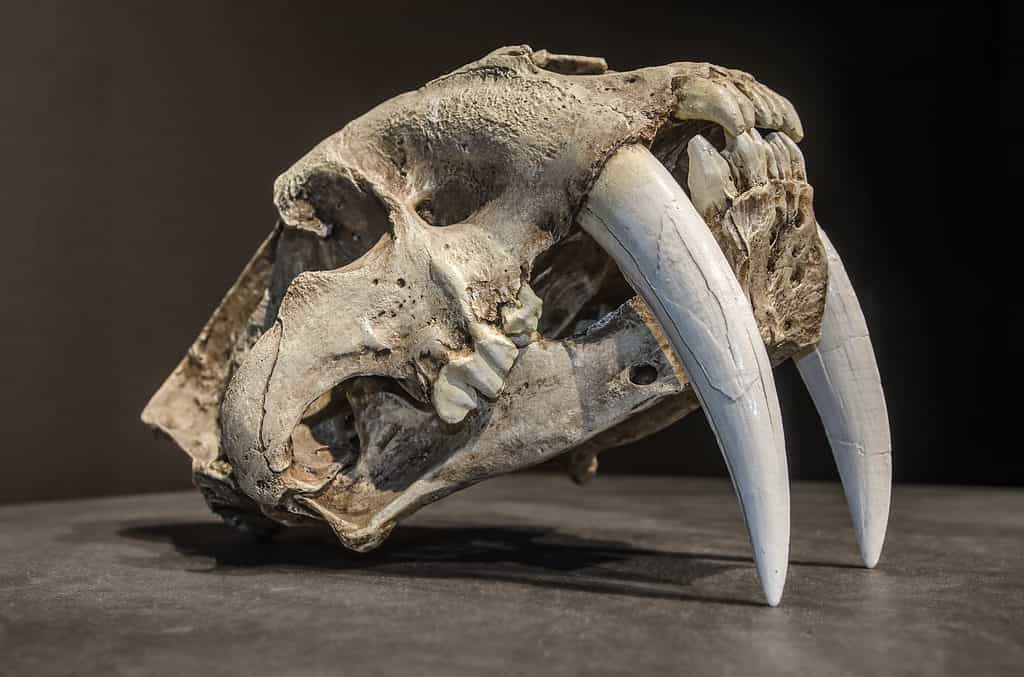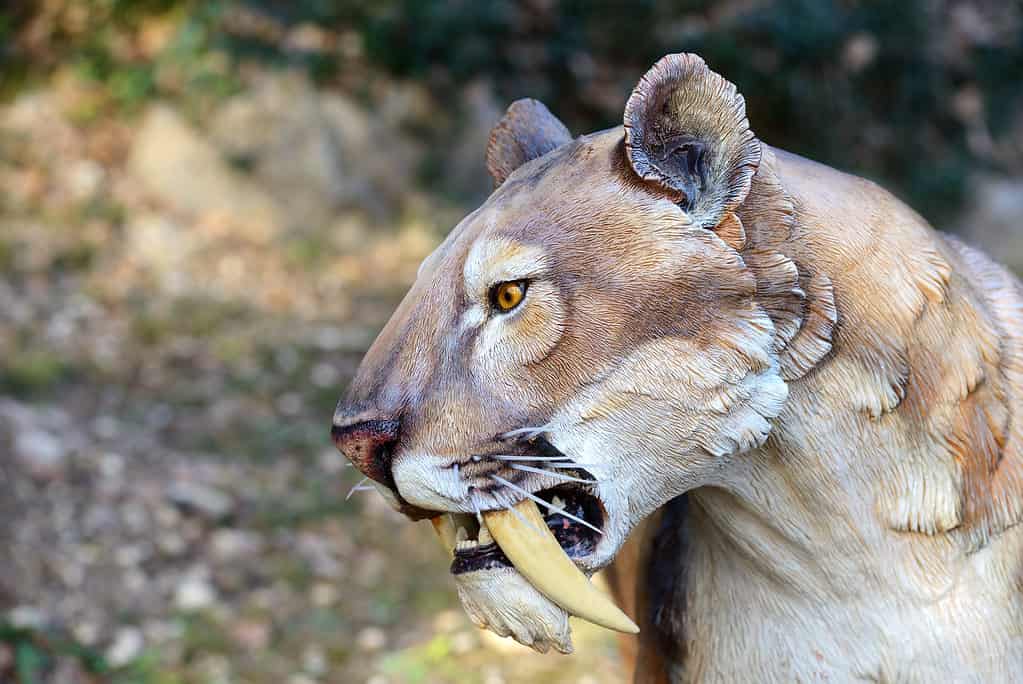Have you ever wondered what sound a sabertooth tiger made? If so, you’re not alone. Scientists at North Carolina State University recently set out on the academic adventure of uncovering whether or not the sabertooth tiger purred or roared — or made a different sound entirely!
Modern cats are divided into two separate groups. First, you have your typical Pantherine big cats, also known as the roaring cats. This includes lions, tigers, and jaguars. Then, there are the Felinae small cats, or purring cats. These are your lynxes, cougars, ocelots, and house cats. Roaring cats lack the anatomy to purr; purring cats have the anatomy to roar. However, the sabertooth doesn’t belong to these two branches. Instead, as a prehistoric species, the sabertooth existed long before either of these two branches formed. This means that roaring cats and purring cats are more closely related than the sabertooth is to either group. This can make it difficult to know what sound sabertooth tigers made from an evolutionary standpoint alone.
As a result, scientists had to examine small bones located in the throat instead. While sound comes as a result of soft tissue and similar features, the bones of the throat are still unique to roaring or purring. These bones, known as the hyoid bones, are responsible for keeping the soft tissues and larynx in place. Different species have a different amount of these bones, with humans having only a single hyoid bone, roaring cats having seven hyoid bones, and purring cats having nine hyoid bones, according to Ashley Deutsch, lead author of the research at NC State.
What Sound Did the Sabertooth Tiger Make?
With that information in mind and fossils available, scientists have been able to come to a better understanding about what sounds the sabertooth tiger may have made. However, it’s a surprisingly tricky topic. The sabertooth tiger had an estimated seven hyoid bones. According to the pattern seen in modern cats, this would mean that the sabertooth tiger roared. However, upon closer inspection, while sabertooth tigers had seven hyoid bones, those bones were structurally similar to those of the purring cats.
The final result? Adam Hartstone-Rose, a professor of biological sciences at the university, says that the sabertooth may have roared, purred, or made a different sound entirely.

Understanding what sound the sabertooth made involves examining different bones, such as the hyoid bones.
©Sasha Samardzija/Shutterstock.com
Species Profile: Sabertooth Tiger
Typically, the term “sabertooth tiger” refers to the Smilodon. This is a genus of extinct cat species, including S. gracilis, S. fatalis, and S. populator. These were species found in the western hemisphere that went extinct around the same time as much of the megafauna of North America and South America. This includes species such as the woolly mammoth. Species in the genus Smilodon are best known for their long canine teeth, which have been recorded to be up to 11 inches long.

The name “sabertooth tiger” often refers to species in the genus Smilodon.
©Sfocato/Shutterstock.com
The photo featured at the top of this post is © Daniel Eskridge/Shutterstock.com
Thank you for reading! Have some feedback for us? Contact the AZ Animals editorial team.





